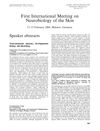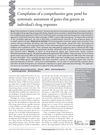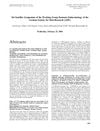The Potential Role of Acetylcholine Receptors in Acne Inversa Pathogenesis
June 2006
in “
Experimental dermatology
”
TLDR Acetylcholine receptors might be involved in the development of acne inversa and smoking could worsen the condition.
The study explored the role of acetylcholine receptors (AChR) in the pathogenesis of acne inversa (HS), a chronic inflammatory disorder. Researchers used immunohistochemistry and RT-PCR to identify the presence of nicotinic α3, α5, α7, and α9 AChR, as well as muscarinic M1–M5 AChR in lesional epidermis, showing a pattern similar to normal skin. They found that choline-acetyltransferase (ChAT) reactivity was particularly high in the epidermal basal layer and extended to all epithelial layers in sinus tracts, especially in the hair follicle infundibulum. This suggests that endogenous acetylcholine (ACh) may work with nicotine from tobacco to worsen infundibular hyperkeratosis. However, ChAT was not detected in macrophages, indicating that macrophages are likely targets of ACh rather than contributors to ACh signaling in acne inversa.



